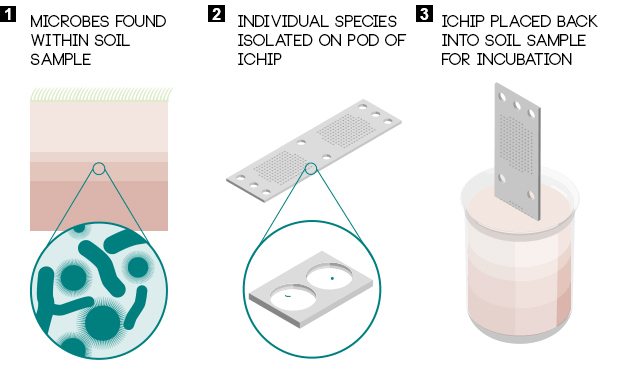Up until now uncultured bacteria have been an untapped source of new antibiotics, but promising research published in Nature yesterday highlights novel in-situ methods for growing uncultured microorganisms. One of these methods has resulted in the discovery of a new antibiotic named Teixobactin.
Overuse of antibiotics since the 1940s has resulted in increased antimicrobial resistance and limits the useful lifespan of antibiotics, thereby highlighting the requirement for the constant introduction of novel compounds to fight bacterial infection.
The news follows US economist Jim O’Neill’s prediction that up to 300 million people will die prematurely by the year 2050 due to antimicrobial resistance. In 2013, the chief medical officer of the United Kingdom announced that antimicrobial resistance would be put on the government’s national risk register, highlighting both the severity of the issue as well as the overarching global impact.
Historically the majority of antibiotics were produced by screening microorganisms within soil, but this limited resource was exhausted by the 1960s, and the synthetic approaches that followed were unsuccessful in attempting to recreate this platform. Whilst soil is packed full of varied microbes, only 1% can be isolated and grown in the lab.
American scientists have found a way around this by isolating individual strains of bacteria and placing each on a separate pod on a specially-designed iChip. The iChip was then placed back into the soil sample and incubated for a month, allowing the nutrients and growth factors found within the soil to permeate through the iChip, thereby providing the colony with the required nutrients for growth.

The iChip serves as a barrier allowing a single species of bacterium to form a homogenous colony within the pod, preventing cross-contamination issues from other microbes. After a month of incubation, the chip was removed from the soil and the individual colonies were streaked onto SMS agar. The propagation and purification of these colonies outside of the soil sample have resulted in the discovery of Teixobactin, and more discoveries from this method are expected in the near future.
Check out the full article over at Nature (Warning: this article behind a paywall).
Follow Evolution Global Talent Attraction on Twitter, Facebook and LinkedIN to keep up-to-date with news and trends from the biotechnology, biosciences, medical device, IT and Intellectual Property industries.





